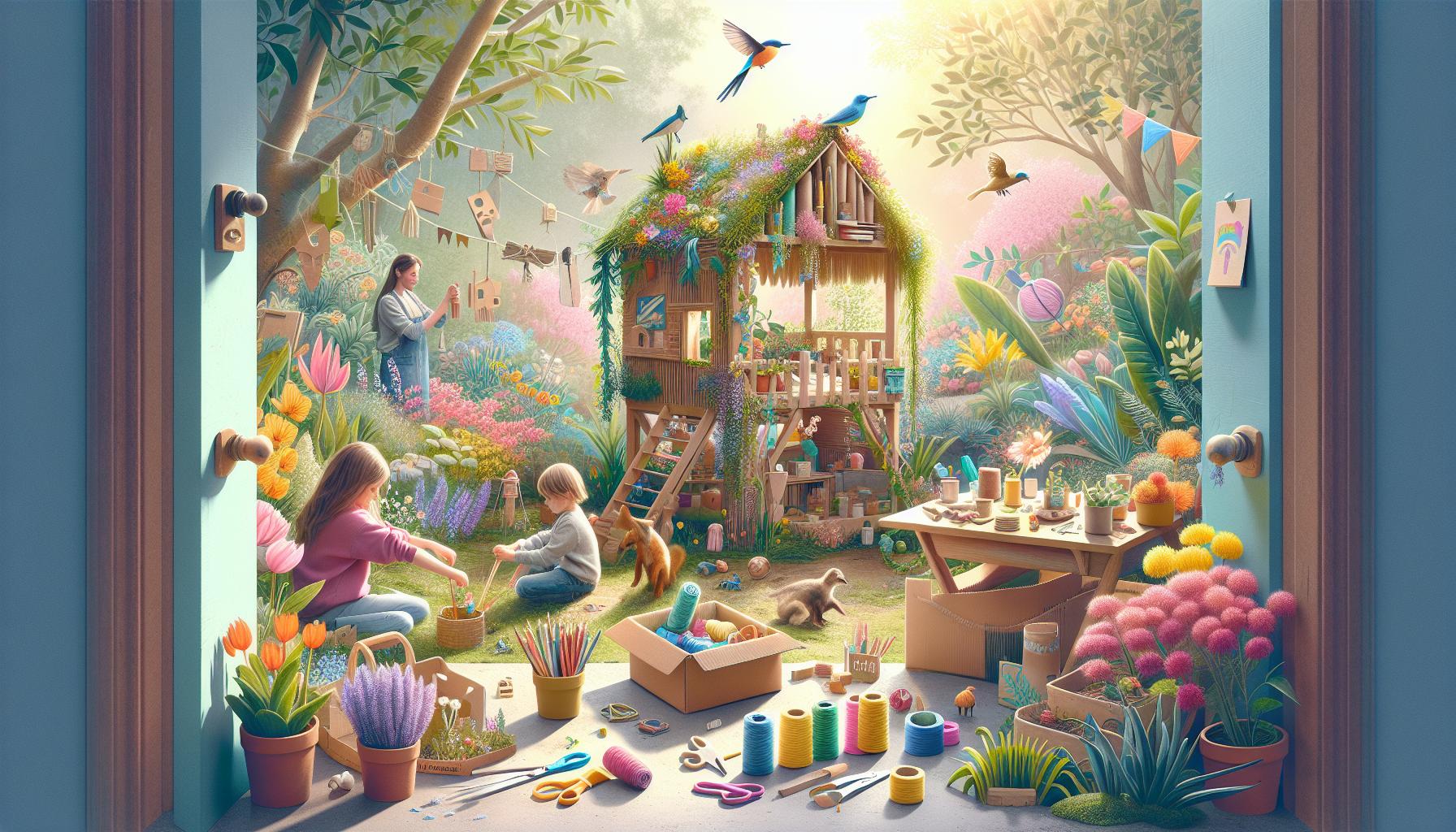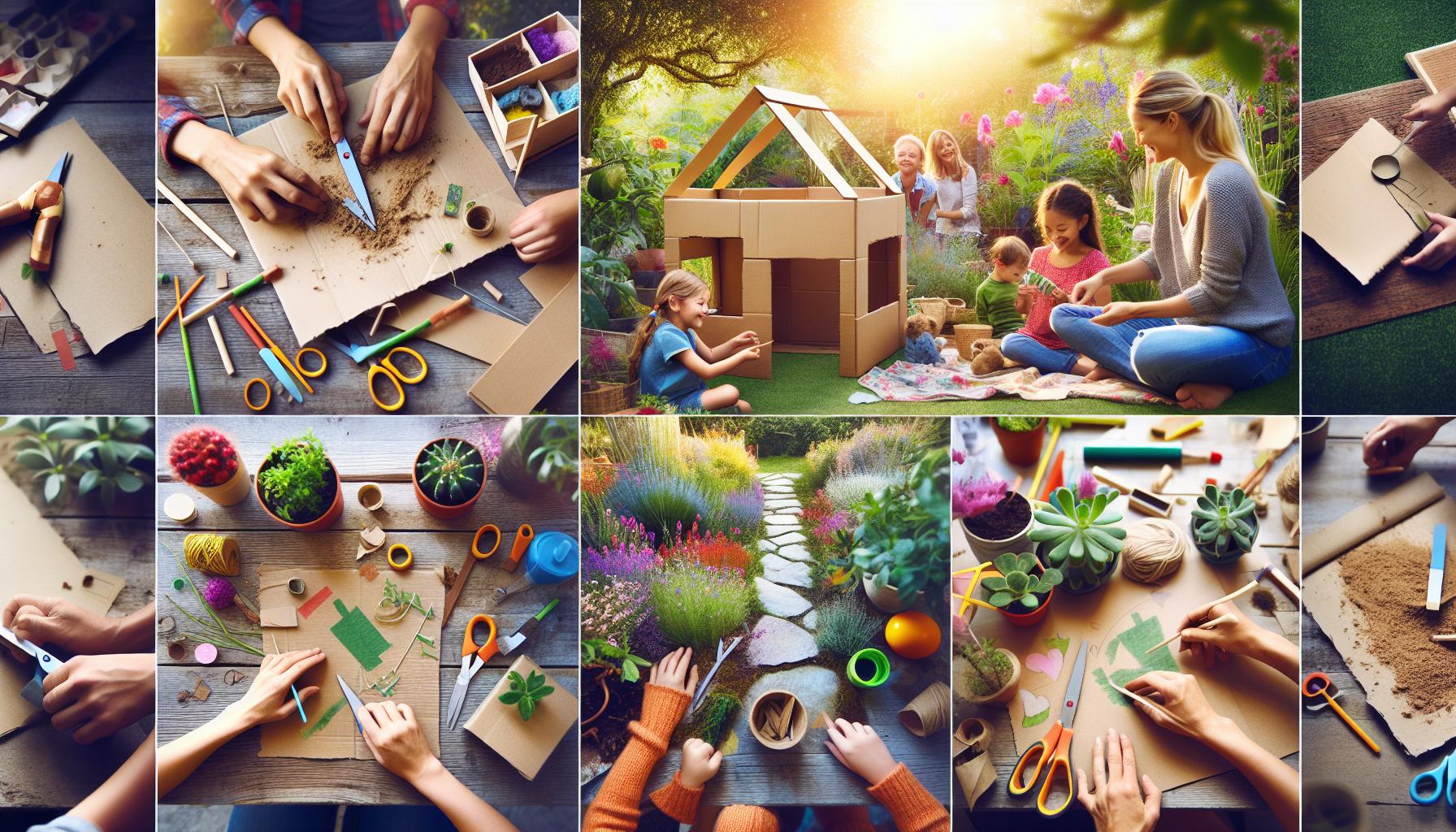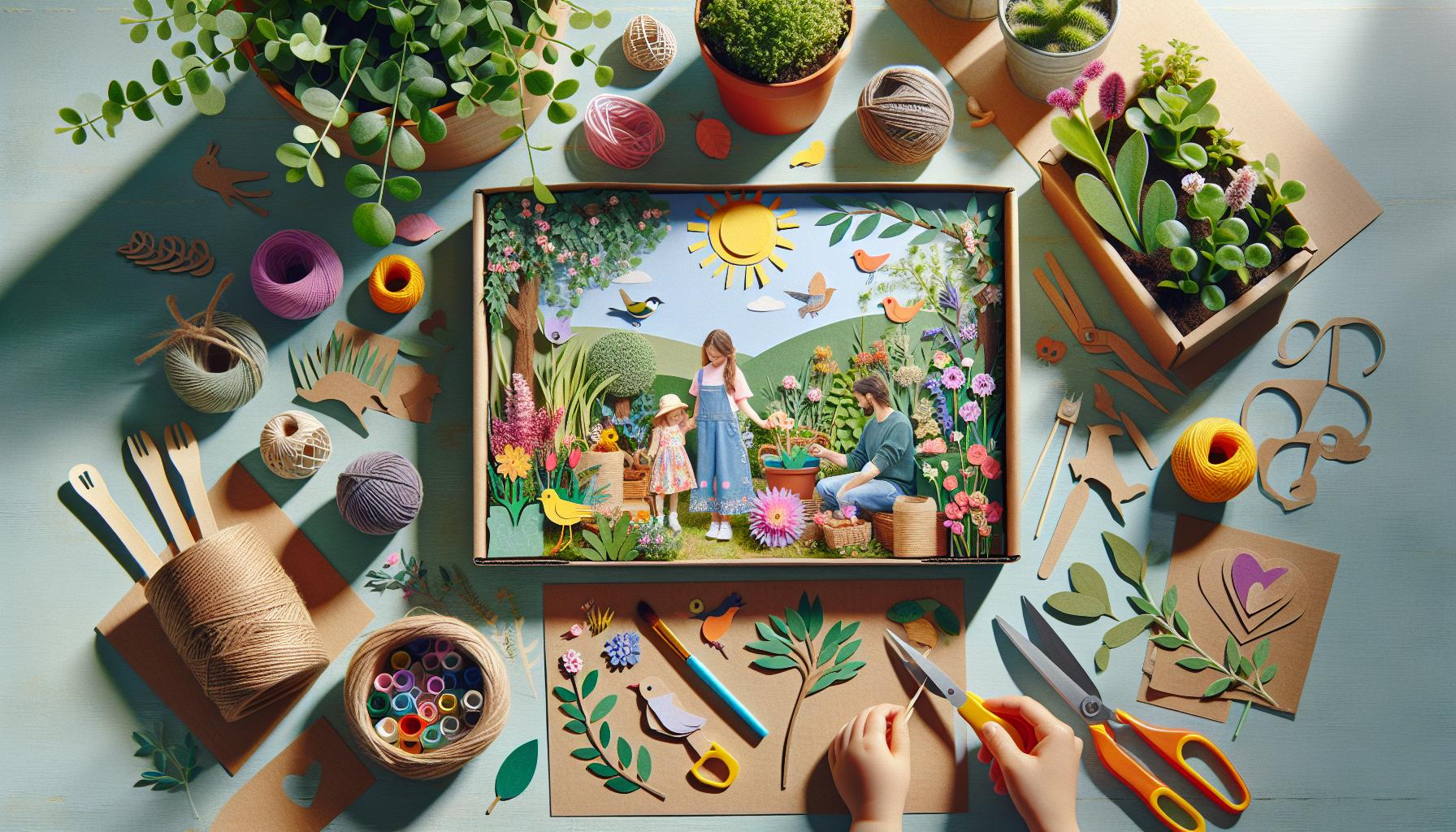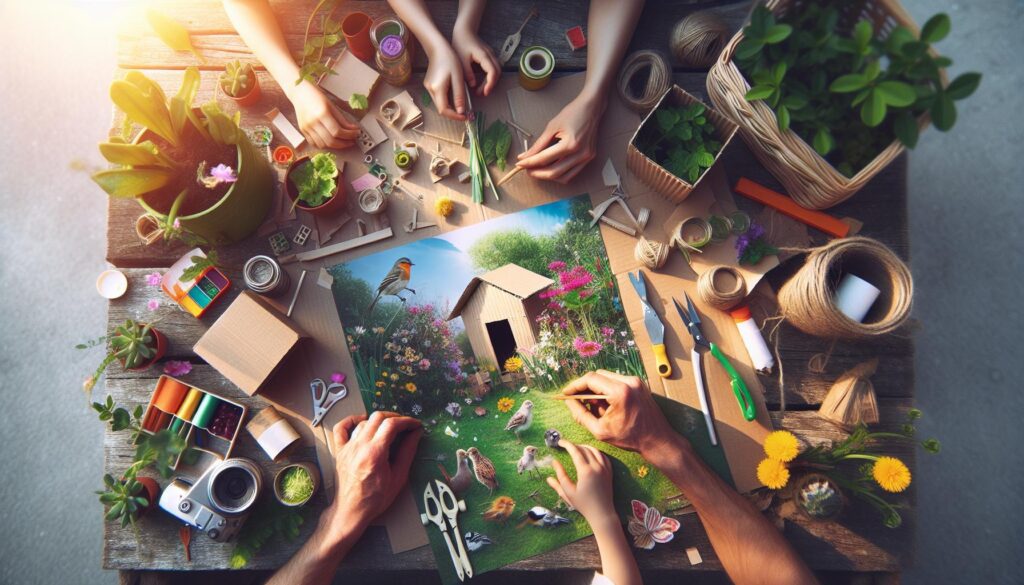Cardboard Fort Kit: Creative Play with Simple Materials
Imagine a world where your living room transforms into a mystical castle, a top-secret hideout, or a bustling spaceship, all with the power of a cardboard fort kit! In this article, we’re diving into the wonderful realm of creative play that requires nothing more than your creativity and a few simple materials. Gone are the days of sleek plastic toys and overpriced gadgets—it’s time to rediscover the joy of those humble cardboard boxes. Thay’re not just recycling bin inhabitants; they’re the building blocks of adventure, waiting to unleash your inner architect and tiny tot’s wildest dreams. So grab those empty boxes, unleash your creativity, and let’s explore why the cardboard fort kit is the ultimate ticket to endless fun—no glue gun necessary!
Exploring the Benefits of Creative Play with Cardboard fort Kits
Engaging in creative play using cardboard fort kits enhances children’s imagination and cognitive skills. These kits transform simple cardboard into a mesmerizing world where young minds can construct, deconstruct, and reconstruct to their heart’s content. By manipulating these materials, children learn vital problem-solving abilities while also exploring spatial awareness and engineering principles. The open-ended nature of cardboard play encourages innovation and resourcefulness,allowing children to express their unique ideas.Furthermore, the tactile experience of building with cardboard fosters sensory advancement, as they learn to recognise different textures and weights.
Collaborative play is another critically importent benefit of these cardboard fort kits. As children join forces to design and build, they cultivate essential social skills such as communication and teamwork. This shared experience not only fosters relationships but also helps them navigate the dynamics of group play. additionally, the kits can be tailored to suit various themes or storylines, further igniting creativity. Consider the following advantages that highlight the impact of creative play:
- Imaginative Exploration: Kids create diverse narratives within their forts.
- Fine Motor Skills: cutting, folding, and assembling improve dexterity.
- Emotional Resilience: Overcoming construction challenges builds confidence.
- Environmental Awareness: Promotes eco-kind play with recyclable materials.
Essential materials for Building a Cardboard Fort
Creating a cardboard fort is a delightful adventure that not only sparks creativity in children but also cultivates essential skills such as problem-solving and teamwork. To get started, gather the following essential materials that will help bring your fort vision to life:
- Cardboard boxes: The backbone of any fort, repurposed boxes of various sizes are perfect for walls, roofs, and even furniture.
- Scissors and Box Cutters: Essential tools for cutting through cardboard to create windows, doors, or special designs.
- Tape and Glue: Strong adhesive options help secure the structure. Duct tape is particularly effective for heavier pieces.
- Markers and Paint: Allow for customization and decoration, transforming a plain fort into a vibrant wonderland.
- String Lights: Adding lights can create a magical atmosphere inside the fort, perfect for nighttime play.
- cushions and Blankets: For comfort and coziness, these can serve as seating or bedding for an epic fort sleepover.
in addition to the core materials, consider adding a few other items to enhance the play experience.incorporating accessories can deepen the creative engagement and make the fort feel even more special.Here’s a swift reference of some fun extras to consider:
| Accessory | Purpose |
|---|---|
| Fabric Scraps | For adding texture and warmth to the fort. |
| Stickers | Encourage personalization and artistic expression. |
| Old Bed Sheets | Great for creating roofs or walls; easy to drape or tie. |
| Cardboard Tubes | Can be used as support beams or fun hiding spots. |

Step-by-Step Guide to Constructing Your Cardboard Fort
Building your cardboard fort is an exciting endeavor that taps into your creativity and problem-solving skills. start by gathering your materials. You’ll need large cardboard boxes, scissors, tape, and markers or paints for decoration. Consider finding different box sizes to create a multi-level fort. Plan out your fort’s design on paper first, which helps visualize the layout and determine how many pieces you’ll need. Such as,you can have a central chamber with extended tunnels or lookout points by cutting entryways into different boxes.
Next, it’s time for construction. Begin by cutting out doors and windows in your cardboard boxes for accessibility and ventilation. Use tape to securely connect the boxes, ensuring stability. Here’s a helpful tip: reinforce joints with extra strips of tape where needed. Once your structure is complete, let your creativity shine. Use markers or paints to add vibrant colors and designs to the outside. You could also incorporate additional elements such as decorations or themes based on your favorite stories or adventures. And remember, the fun doesn’t just stop at building; invite friends or family to join in for an imaginative play session inside your newly constructed abode!

Incorporating Educational Elements into Cardboard Play
Integrating educational elements into cardboard play can transform simple structures into powerful learning tools. When children engage in creating their own cardboard forts, they naturally develop a variety of skills that are crucial for their growth.Through the construction process, they practice problem-solving, utilize fine motor skills, and enhance their creativity. Encouraging kids to think critically about their designs promotes engineering principles such as balance and stability. Additionally, introducing tasks like measuring the materials or designing blueprints can lay a fantastic foundation for basic math skills and spatial awareness.
To further enrich the learning experience, consider incorporating themed activities that align with various subjects. Here are some simple ideas to get started:
- History: Build forts that represent different architectural styles from various historical periods.
- Science: Create a mini-experiment station by transforming a cardboard box into a laboratory for conducting simple physics experiments.
- Literature: Use the fort as a cozy reading nook, encouraging storytelling sessions.
- Art: Let children decorate their cardboard creations with paint and craft supplies, promoting artistic expression.
This approach not only fosters creativity but also prompts discussions and questions that can lead to deeper learning opportunities. By merging play with education, we can help children become enthusiastic learners while enjoying the imaginative world that cardboard construction allows.
Encouraging Imaginative Storytelling Through Fort Adventures
Building a cardboard fort is more than just stacking boxes; it’s an invitation to a world of imaginative storytelling. Children engage in creative play that allows them to transform simple materials into extraordinary adventures. As they construct their forts, they set the stage for countless scenarios, which fosters essential cognitive skills. Some examples of stories that can unfold within these cardboard walls include:
- A Pirate’s Hideout: Children can provide a backdrop of high-seas adventures,battling mythical sea creatures while searching for buried treasure.
- A Magical Castle: A fort can become a royal castle, where young imaginations create their own fairytales with princes, princesses, and dragons.
- An Alien Space Station: Kids can travel to distant galaxies, inventing new life forms and super technologies.
The beauty of a cardboard fort lies in its ability to adapt to the ever-changing whims of its creators. A simple door here can become a magical portal, while a few windows can transform into lookout points for adventure. This adaptability encourages children to collaborate and share ideas, enhancing their social skills as they narrate their plots, negotiate roles, and build upon each other’s narratives.To demonstrate this, the following table highlights how fort designs can relate to various storytelling themes:
| Fort Design | Story Theme |
|---|---|
| Castle Fort | Knights and Dragons |
| Pirate Ship | Treasure Hunts |
| Space Pod | Alien Encounters |
Safety Tips and Best Practices for Cardboard Structures
When constructing cardboard structures, safety should be a paramount consideration. always ensure that the materials you use are clean, dry, and free from any harmful substances or sharp edges. it’s essential to create a designated play area that’s spacious and well-ventilated, allowing for ample movement and reducing the risk of accidents. Enforcing some basic safety rules can make playtime enjoyable for everyone:
- Supervision: Always have an adult present, especially for younger children.
- Stable Designs: Ensure all structures are stable and secure to prevent tipping or collapsing.
- Proper Tools: Use child-safe scissors and other tools, avoiding sharp objects when possible.
- clear Pathways: Keep walkways clear of obstacles to minimize tripping hazards.
Incorporating best practices not only promotes safety but also enhances creativity. When engaging in building projects, encourage children to explore their imagination while also teaching them basic construction techniques. A simple table can help with planning the design and materials needed:
| Structure Type | Materials Required | Estimated Time |
|---|---|---|
| Cardboard House | Boxes, tape, scissors | 1-2 hours |
| Cardboard Tunnel | Large boxes, markers | 30-45 minutes |
| Cardboard Castle | various box sizes, paint, glue | 2-3 hours |
Implementing these strategies will foster a safe and enjoyable surroundings for children to create and play. Encouragement and guidance are critical in helping develop their skills while instilling a sense of accomplishment.
Ways to Personalize Your cardboard Fort Experience
Transforming your cardboard fort into a unique and immersive play space can be an exciting endeavor. One way to personalize your fort is by creating themed decorations that reflect the interests and imaginations of its inhabitants. Consider incorporating elements such as fairy lights to add a whimsical glow, or using washable markers to draw scenery on the walls. You might also want to introduce fabric scraps as curtains or banners, which can be tied to create distinct rooms or territories within the fort, promoting imaginative play. Utilizing everyday items not only personalizes your fort but also enhances their creative experience.
Collaboration can further elevate the cardboard fort experience. Invite family members or friends to contribute to the design and decoration of the fort through team-building activities. You can organize sessions for painting, designing floor plans, or crafting furniture from additional cardboard boxes. This collaboration can be documented through a progress chart, showcasing the different roles and contributions each person made throughout the creation process. Here’s a simple table to help you keep track:
| Team Member | Contribution |
|---|---|
| Child 1 | Designed entrance and windows |
| Child 2 | Painted the walls |
| Adult 1 | Provided materials and support |
Engaging multiple participants not only instills a sense of ownership but also fosters teamwork and communication skills, enhancing the overall fun and efficacy of the building process.Consider these elements to create a uniquely personalized cardboard fort that reflects the creativity and spirit of everyone involved.
Expanding the Fun: Transforming Cardboard Forts into Endless Play Zones
Transforming your cardboard fort into a vibrant play zone opens up a world of imaginative experiences for children. Instead of a simple structure, consider integrating themed areas within the fort that inspire creativity. You can easily designate separate sections as castles, pirate ships, or even outer space settings. Here are some simple ideas to enhance playtime:
- Arts and Crafts Corner: Set up a small table inside for drawing or crafting.
- Reading Nook: Create a cozy spot with cushions and a small bookshelf.
- Interactive Games: Introduce puzzles or board games to engage the kids.
Further expanding the fun, consider adding DIY accessories to the fort’s environment. Simple items like fairy lights can create a magical atmosphere, while cardboard cutouts can bring characters to life. if you want to boost interactivity,below is a table highlighting easy to implement ideas for your cardboard fort:
| Accessory | Purpose |
|---|---|
| colorful Flags | Adds fun decoration,encourages team play. |
| Window Screens | Transforms it into a real house, inspires storytelling. |
| Shoe Box Storage | Keeps forts organized, promotes tidiness. |
Faq
What is a Cardboard Fort Kit and how does it encourage creative play?
A Cardboard Fort Kit is essentially a collection of cardboard panels,connectors,and possibly thematic decorations designed to facilitate the construction of a fort or play structure. These kits frequently enough come pre-cut and include instructions that can definitely help children build intricate designs, but they also allow for a high degree of creative freedom. With just simple materials like cardboard, kids can engage in imaginative play, turning a simple box into a castle, spaceship, or secret hideout.
The benefits of using such kits are manifold. Research indicates that creative play fosters cognitive development, enhances problem-solving skills, and boosts social interaction. According to the American Academy of Pediatrics, play is an essential component in a child’s growth, allowing them to explore their creativity and learn important life skills. When children work together to build their fort, they also practice communication and teamwork, which are crucial skills both in childhood and adulthood.
How can parents and educators effectively use a Cardboard Fort Kit in play?
Parents and educators can harness the power of a Cardboard fort Kit by incorporating it into various learning environments. For instance, in a classroom setting, teachers can utilize the kits in project-based learning or STEM activities. Students might work in groups to design and build a fort, integrating concepts of geometry and physics as they plan the structure’s stability and shape. This hands-on approach makes abstract concepts more relatable and fun.
At home, parents can create themed activity nights where the fort-building becomes part of a broader storyline. For example, after constructing the fort, families could participate in role-playing games, where children enact a story that takes place in their newly built structure. This not only enriches the creative experience but also provides an opportunity for family bonding. Engaging adults in this process can also enhance the children’s excitement and imagination, reinforcing the idea that play is valued and nurtured.
What materials are typically included in a Cardboard Fort Kit?
A standard Cardboard Fort Kit typically includes various components made from durable cardboard to withstand playful interactions. The core materials often encompass:
- Pre-cut cardboard panels: These can be easily assembled to create walls, roofs, and any architectural design a child can imagine.
- Connectors or fasteners: Items like clips, Velcro strips, or string allow for easy attachment and disassembly of different pieces.
- Thematic accessories: Some kits may offer items such as stickers, markers, or decorative elements that encourage personalization and creativity.
The quality of materials in these kits is vital for user experience. For example,sturdy cardboard can endure more wear and tear,ensuring that the fort remains intact during playtime. Additionally,parameters like size and scalability are frequently enough a consideration for manufacturers,allowing the fort to grow as the child’s creativity expands. According to market research, the demand for eco-friendly and sustainable materials has surged, influencing the production of these kits to focus on recyclability and non-harmful substances.
What age group is a Cardboard Fort Kit suitable for?
Cardboard Fort Kits are generally suitable for children aged 3 and up. Though,the level of assistance required may vary based on the child’s age and ability. for toddlers, a basic kit with less complexity might be appropriate, as they can benefit from guided play alongside an adult. As children grow older, particularly between the ages of 5 to 12, the kits can become more intricate, promoting advanced construction skills and problem-solving.
For older children and even tweens, these kits can still provide enjoyment and challenge. They can create more complex designs, adding layers of creativity like themed decorations or incorporating lighting elements.Families can also participate in the construction, regardless of age, as it fosters teamwork and collaboration. In essence, while the kit is designed for children, the collaborative nature of building can engage family members of all ages, making it a collective experience.
How does DIY play with a Cardboard fort Kit support sustainability?
Using a Cardboard Fort Kit aligns seamlessly with sustainability principles. many kits are constructed from recycled materials,ensuring that the environmental impact is minimized during production. Once the fort reaches the end of its lifecycle — perhaps when children outgrow the play structure — cardboard is recyclable,thereby reducing landfill waste.This process promotes an understanding among children of the importance of sustainability and responsible consumption.
Moreover,engaging in DIY projects using cardboard fosters a culture of re-use and creativity,which is a core component of sustainable practices. instead of buying new toys or structures, children learn to see potential in materials around them. Research indicates that exposure to recycling and sustainable practices in childhood can produce lifelong habits towards environmentally friendly living. By creating forts out of cardboard, children not only enjoy creative play but also internalize critically important messages related to sustainability and conservation.
Are there safety considerations when using a Cardboard Fort Kit?
Safety is paramount when engaging children in play activities with a Cardboard Fort Kit.generally, these kits are designed with child safety in mind.Most kits use non-toxic materials, ensuring that children can play without the risk of exposure to harmful substances. though, supervision is advisable, especially with younger children who may experience difficulty understanding how to safely construct and use the fort.
In terms of structural safety, parents and caregivers should ensure that the fort is stable and well-built before allowing children to climb into or on top of it.Parents often overlook checking for sharp edges or loose connectors that could pose a risk of injury. It’s also essential to establish clear play guidelines to prevent roughhousing, which might lead to accidents. By maintaining an organized play environment and promoting safe use, caregivers can encourage imaginative play while ensuring a secure setting for children.
What are some creative ways to enhance play with a Cardboard Fort Kit?
To elevate the experience of building and playing with a Cardboard Fort Kit, there are numerous creative enhancements that can be employed. One engaging way is to create themed adventures.For example, a fort can become a pirate ship, with children dressing up in pirate attire and incorporating props like paper maps and mini treasure chests. Crafting a narrative around the fort adds layers of imagination and excitement to the play.In addition, incorporating technology can also enhance the experience. As an example, families can use simple decorations such as fairy lights inside the fort to create a magical atmosphere. Moreover, integrating art supplies — markers, paints, and stickers — can allow children to personalize their fort, promoting ownership and creativity.Storytelling sessions or puppet shows can be organized within the fort, making it a dynamic part of playtime.
Ultimately, while the fort itself serves as a structured base for play, the addition of thematic, decorative, and interactive elements can substantially enrich the overall experience, fostering deeper engagement and greater imaginative exploration.
The Way Forward
As we wrap up our exploration of the Cardboard Fort Kit, it’s clear that this simple yet ingenious tool offers far more than just a fun afternoon activity. By promoting imaginative play and hands-on creativity, it aligns seamlessly with developmental research indicating that such play is crucial for cognitive and social growth in children. Engaging with materials that are easily accessible, like cardboard, not only enhances fine motor skills but also encourages problem-solving and teamwork as kids design and build their own fort creations.
In a world increasingly dominated by screens, the Cardboard Fort Kit stands out as a charming reminder of the joy inherent in tactile, physical experiences. With minimal investment and maximum creativity, families can transform everyday boxes into castles, spaceships, or whatever their imaginations conjure.As you consider ways to enrich playtime, remember that sometimes the simplest materials can lead to the most cherished memories. So, gather some cardboard, unleash your creativity, and embark on a playful adventure that fosters growth, connection, and endless fun. Happy building!



